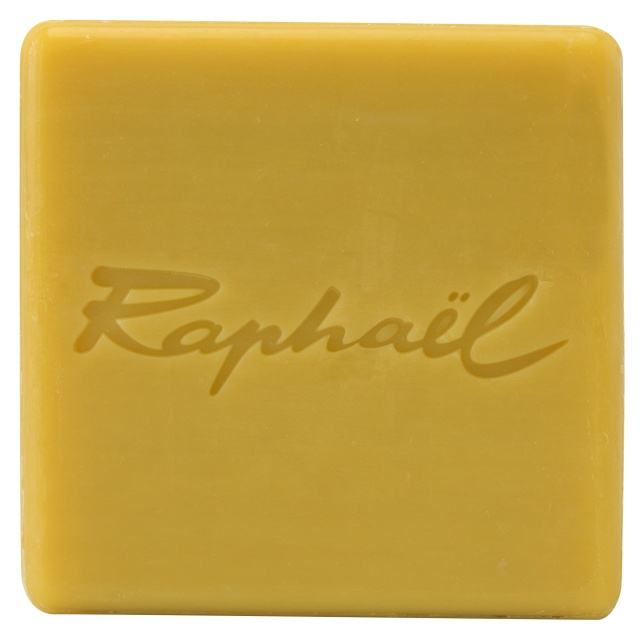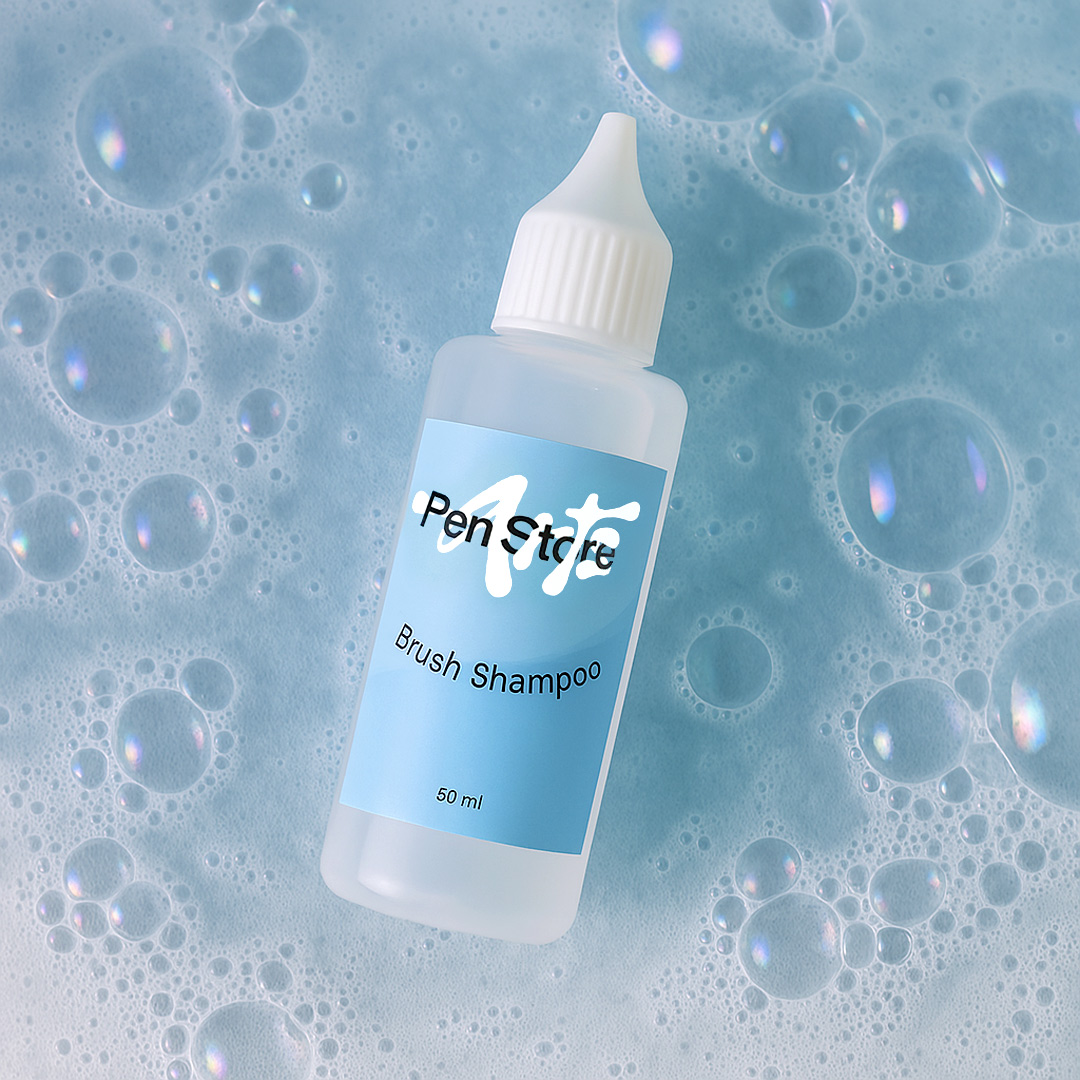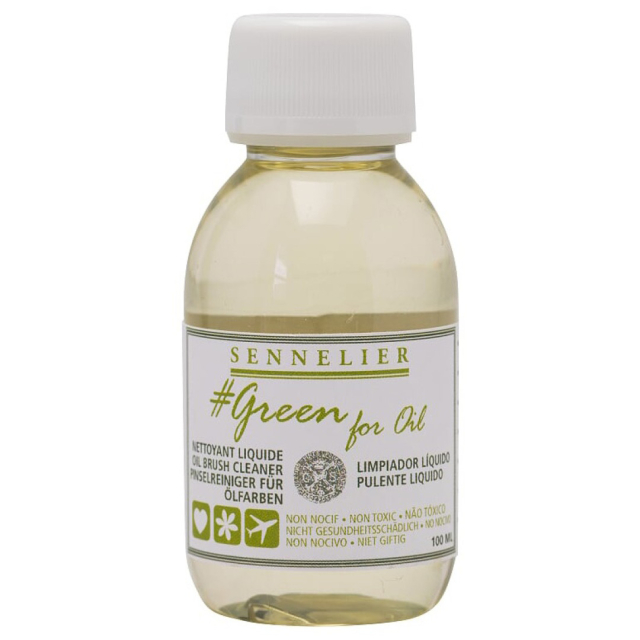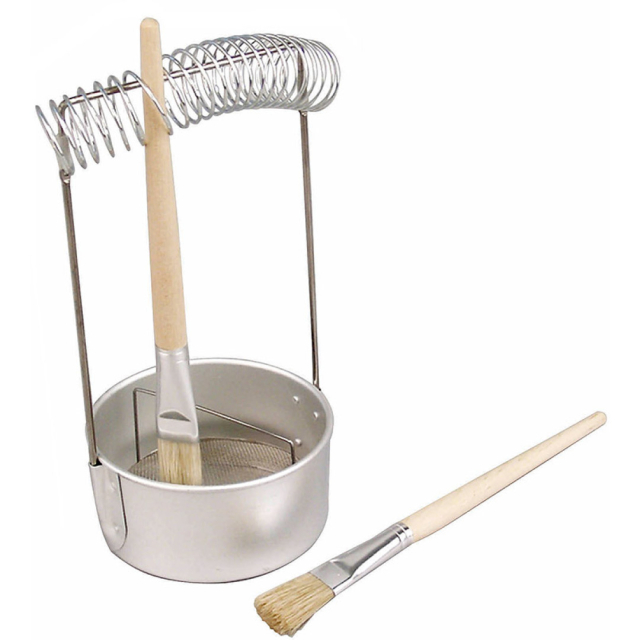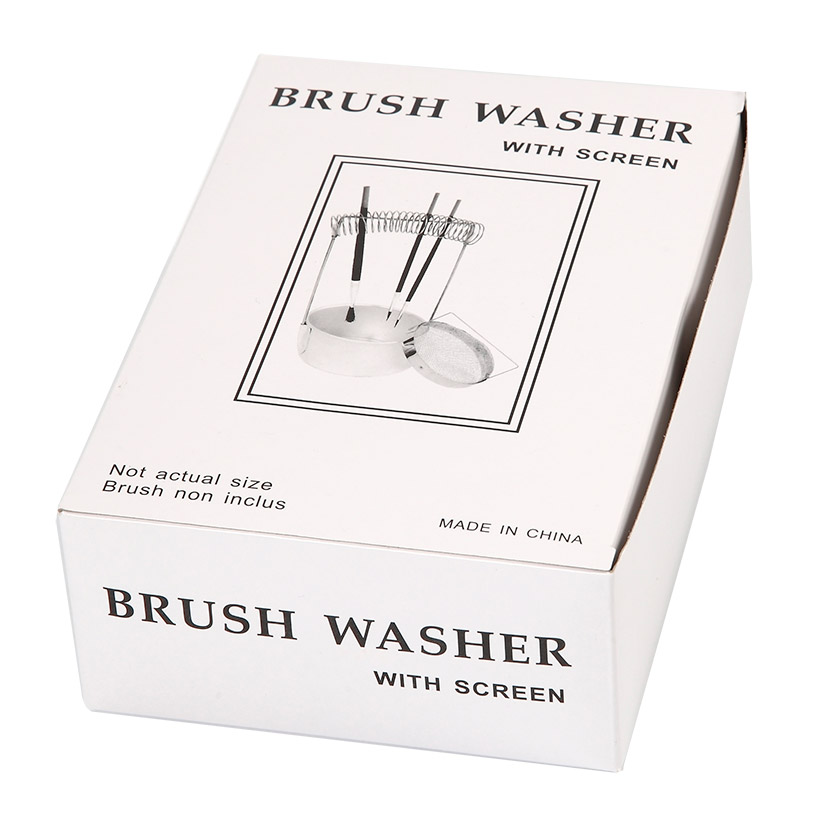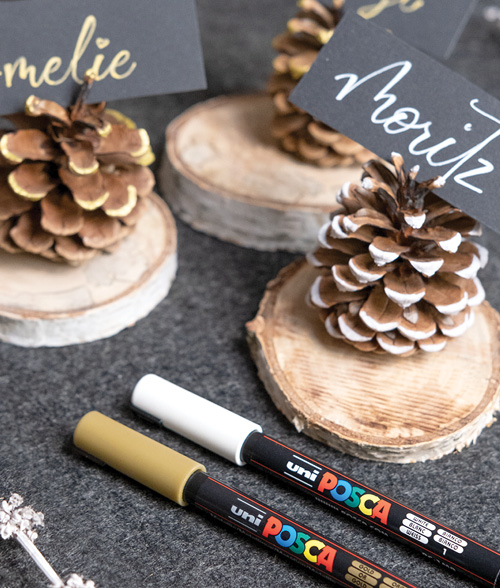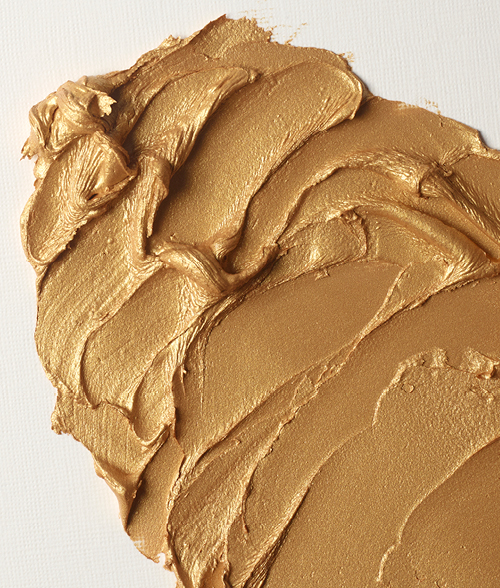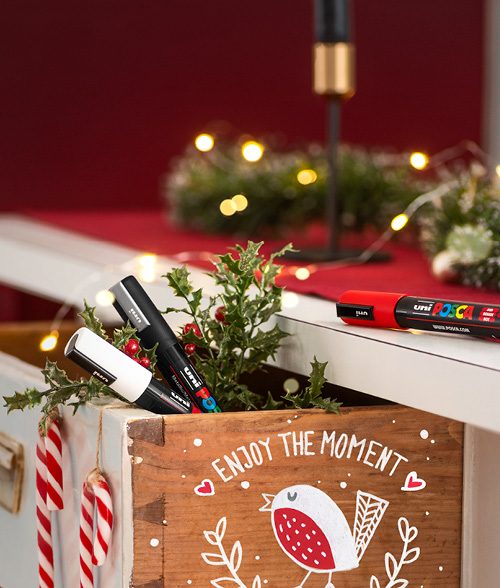Clean your brushes after acrylic, watercolour and oil paint
Cleaning and caring for your artist brushes is essential if you want them to last. Each brush needs to be cleaned in a different way depending on the type of paint you use. Below, we’ve put together a short guide for anyone who isn’t completely sure of the simple methods that can help extend the lifespan of their brushes.
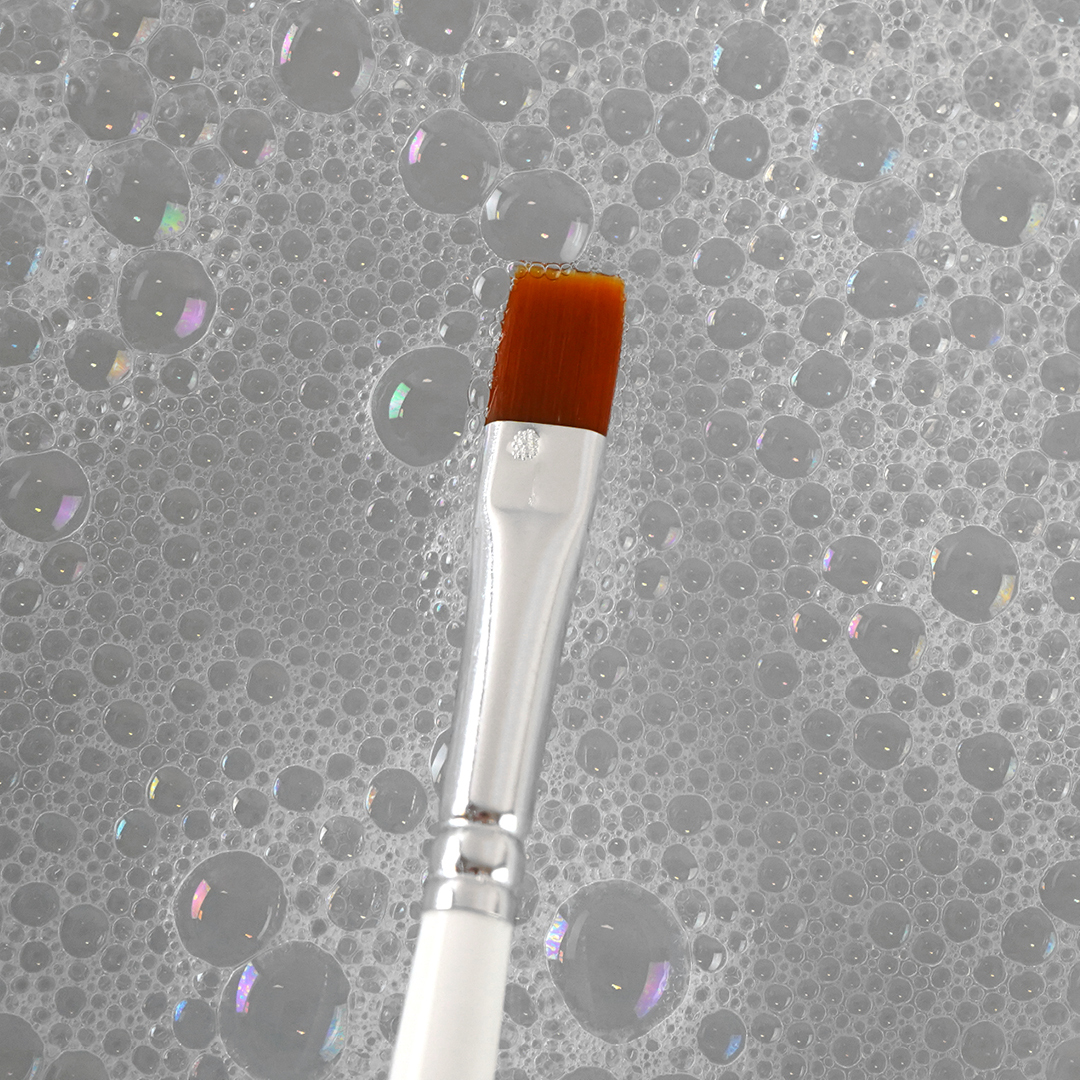
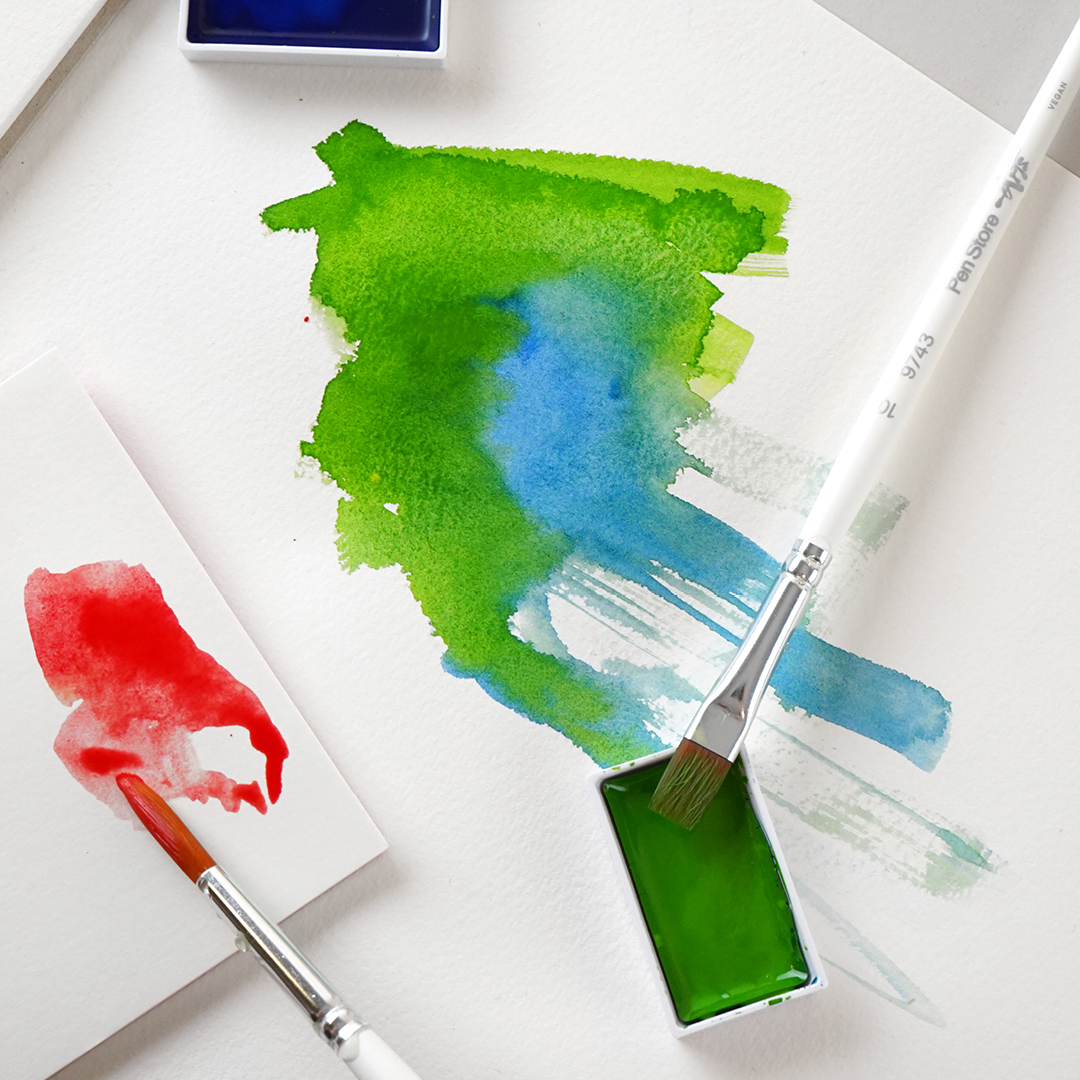
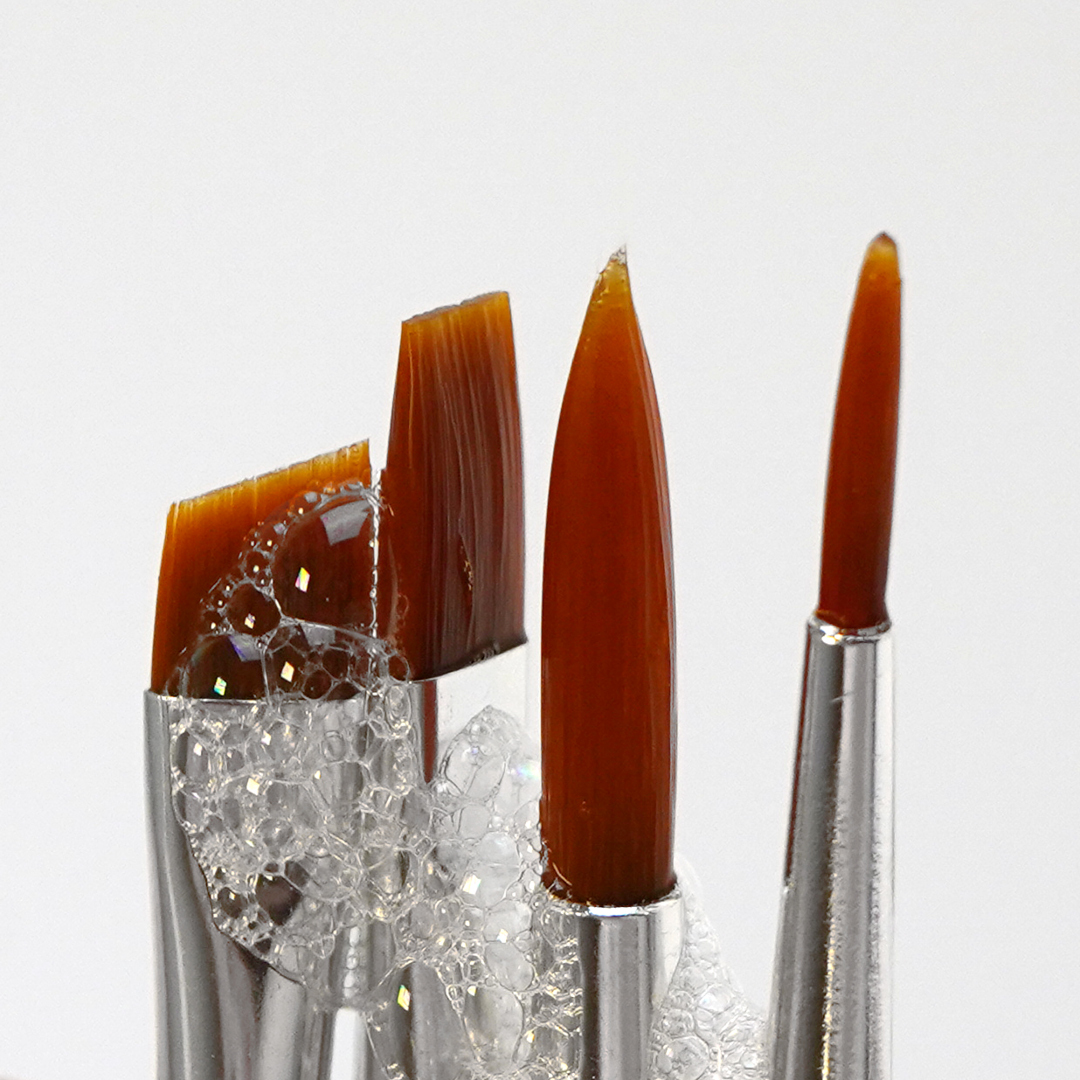
Clean brushes from acrylic paint
To make your acrylic brushes last, it’s important to clean them thoroughly and often. Acrylic paint has a glue-like formula that dries very quickly and sticks to the bristles. Keep the brush moist while painting and rinse it with water during every break. Once you have finished painting, we recommend a thorough clean with brush shampoo and water to ensure that no paint residue remains, as this can reduce the quality and performance of the brush over time. First remove any excess paint with a cloth, then wash the brush in a jar of water, never under the tap, since acrylic paint is considered harmful to the environment. Work in some shampoo to remove stubborn paint residues. The brush should then dry horizontally or hanging with the tip facing downwards.
For more tips, read the guide How to clean acrylic brushes →
Clean brushes from watercolour
Water dissolves watercolour paint, and that’s all you need to wash a watercolour brush. Rinse the brush head thoroughly after use and let it dry lying flat, preferably on a towel. This should be your daily routine. After a while, depending on how often you paint, it’s a good idea to give your brushes a deeper clean. That’s when brush shampoo comes in handy, removing any dust and paint particles that remain.
Get more cleaning tips, including advice on masking fluid, in the guide How to clean watercolour brushes →
Clean brushes from oil paint
Always start by removing excess oil paint from the brush with scrap paper or ordinary kitchen paper. Once you’ve removed most of the paint, place the brush in a jar with some turpentine and swirl it around until the paint dissolves. If there is still paint stubbornly clinging to the brush after this step, you can use brush shampoo, a brush soap or a milder soap to clean it further. When you’re done, rinse the brush in a jar of cold water and let it dry horizontally. Leftover oil paint and solvent must never be poured down the drain.
 United Kingdom (GBP)
United Kingdom (GBP)
